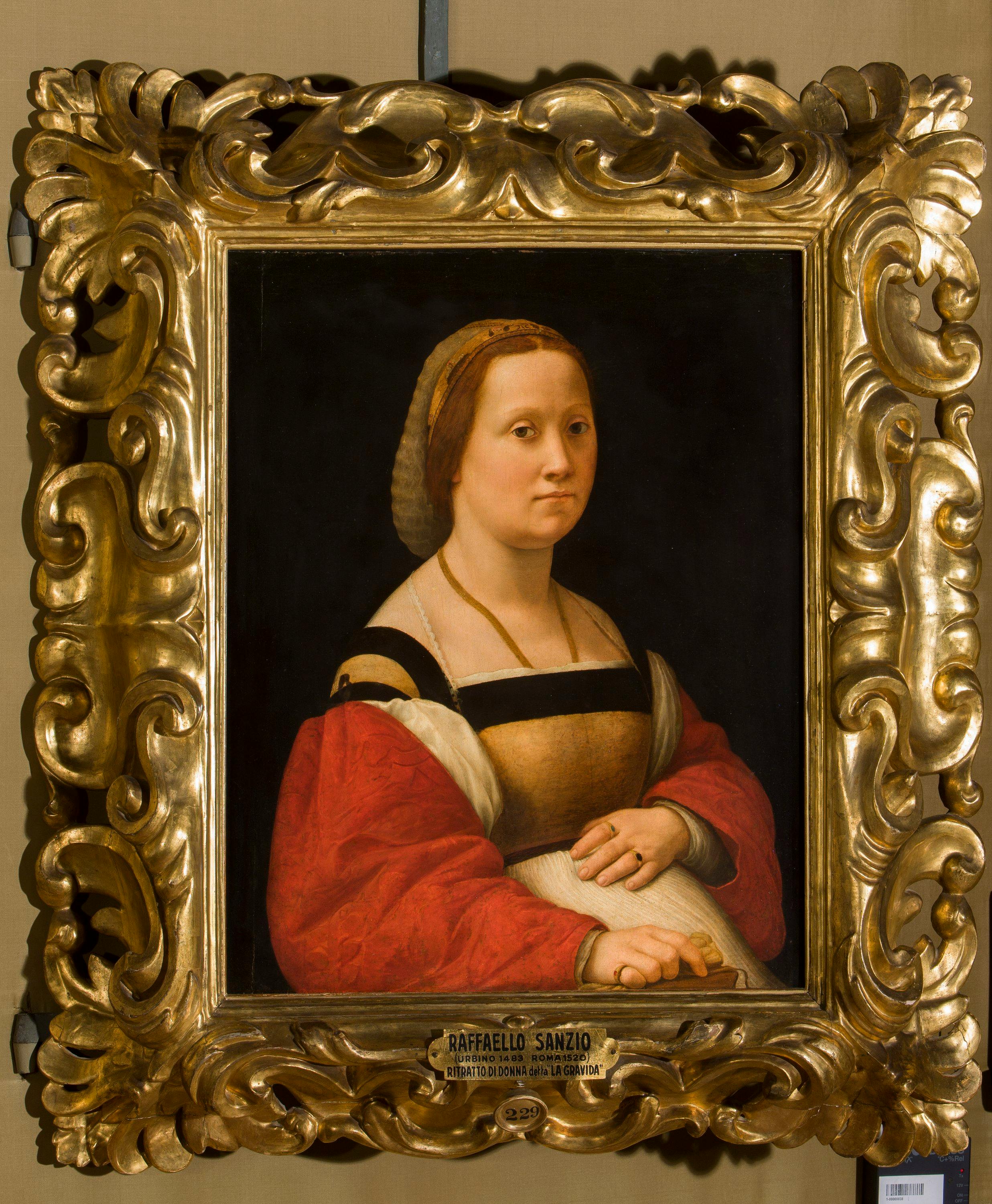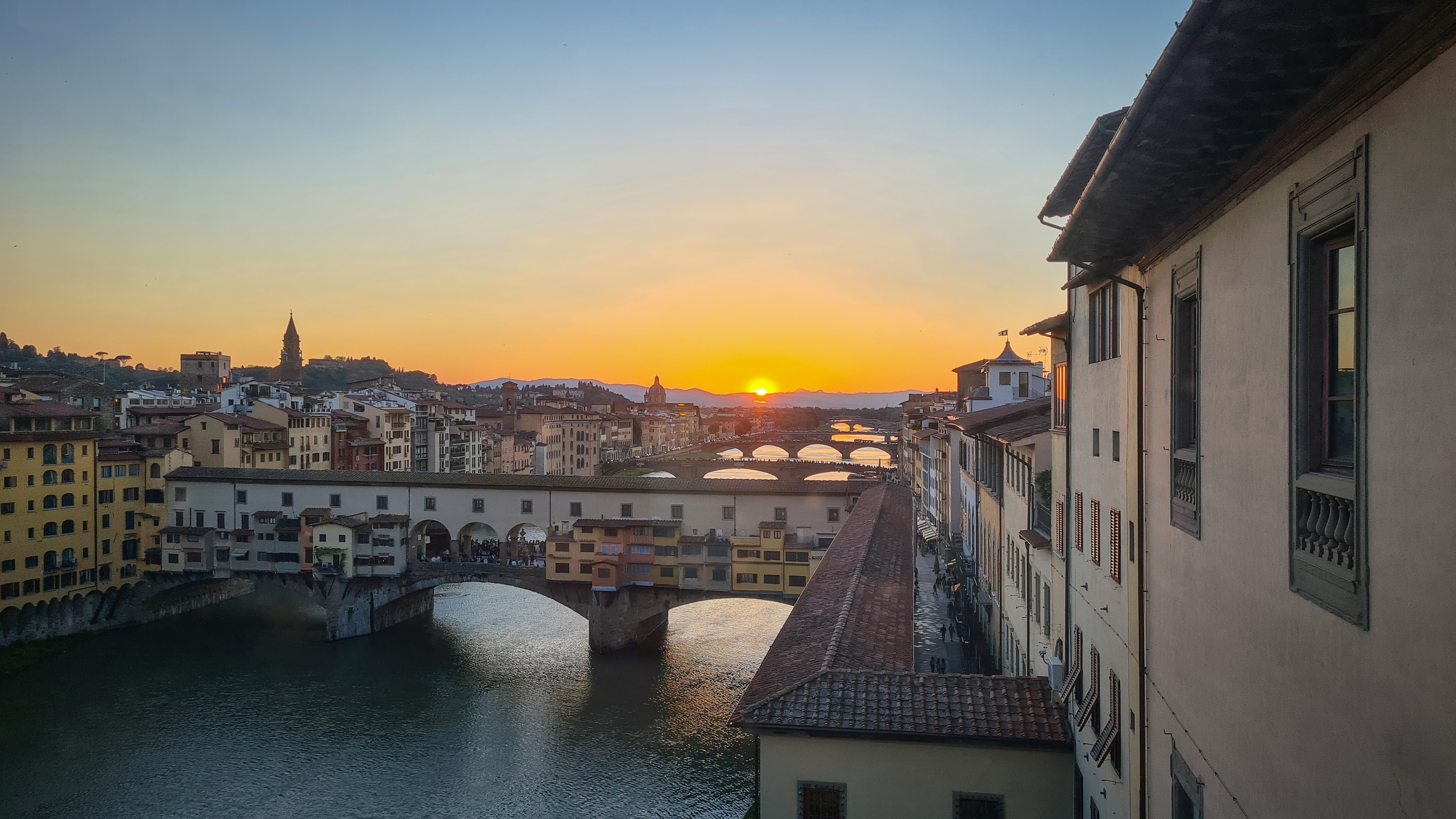Portrait of a woman (“La Gravida”)
Raphael (Urbino 1483 – Rome 1520)
The identity of the woman portrayed in the foreground against a black background is uncertain, with one hand resting on a plane clutching a glove and the other resting on her prominent belly. This eye-catching detail led some 19th century observers to believe that the protagonist was pregnant, giving rise to the traditional title of “Gravida” (pregnant woman) that still characterises this painting today. In the past, it was believed that she might be a descendant of the Bufalini family of Città di Castello because of the two buffaloes facing each other, visible on the edge of the hair net; others thought she was Emilia Pia, daughter of Marco I Pio lord of Carpi, sister-in-law of the dukes of Urbino, Guidubaldo and Elisabetta Gonzaga, and together with the latter mentioned by Castiglione in the pages of the Cortegiano, one of the most famous treatises of the time, focusing on the education of men and women at court. However, none of these assumptions were sufficiently followed up by the scholars and the lady is still, for the time being, a mystery.
Her clothing consists of a white gown topped by a yellow bodice with a black sash, supplemented by wide red damask sleeves fastened at the shoulders with thin bows, and meets the dictates of early 16th-century women's fashion, indicating the high social status of the lady as well as the rings and gold chain of which the pendant disappears into the neckline. The tightly woven net neatly gathers the hair, while in a first draft, identified by radiographic investigations, a few locks lightly slipped out, and stood out against the black background. The scene is then completed by a plane on which the woman rests her hand with the glove; the inclusion of these decorative elements expands the field of observation around the figure, making it more imposing than in Raphael's earlier portraits (such as the portraits of the dukes of Urbino). A similar spatial quest, but transposed en plen air, also applies to the portraits of the Doni couple, in the years not so distant from those when the Gravida was executed. Similarly to the Doni, the Gravida stems from Raphael's experience in the presence of Leonardo's work, in particular the Mona Lisa, which he began in Florence around 1503 and then left unfinished by the master. In order to understand how Raphael had changed from his time in Urbino and Perugia, and the extent to which he gradually abandoned the softness of his master Perugino in the first decade to delve deeper into the investigation of character and feeling in his subjects, we need to observe the delicate study of shadows and light together with the exemplary psychological insight in the serious, profound gaze of the Gravida. These traits became increasingly peculiar to Raphael over time and were combined with a more confident ability to dominate forms, making them solid, sharp, ready to dominate the space. For these stylistic reasons, and in the absence of further documentary evidence, scholars have assumed that the date of the painting dates to the last years of the Florentine period, approximately 1507, before the artist's departure for Rome.
S.Padovani, in Raffaello da Firenze a Roma, a cura di A. Coliva, Milano, 2006, pp. 129-130; S. Padovani in I dipinti della Galleria Palatina e degli Appartamenti Reali. Le Scuole dell’Italia Centrale 1450-1530, a cura di S.Padovani, Firenze 2014, scheda 74 pp.367-371

